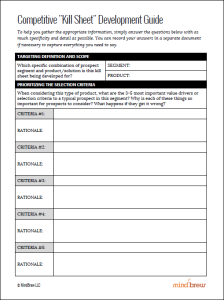In an attempt to stave off costly customer defections and retain key customers, a lot of marketing operations use customer satisfaction surveys to help them find customers who might be unhappy and at-risk. And very often, the results of these surveys are used to assess the “health” of the customer base overall.
Sometimes these types of surveys will work as intended, of course. But more often than not, they really aren’t all that helpful or predictive. Why?
Because customers lie on satisfaction surveys.
In some cases, they may be trying to hide their dissatisfaction so as not to sour the relationship, or alert the powers-that-be, and potentially lose their current trade concessions and favored-nation status.
In other cases, they may not be lying intentionally. They may actually be “satisfied” with your products and services, or very willing to “recommend you to a colleague.” At the same time, however, another vendor may be enticing them to switch to products and services they deem to be even more attractive and “satisfying”. It’s not that you’re bad; it’s just that they think they’ve found someone even better.
Shockingly, some research has even shown that customers will often return highly favorable satisfaction surveys right before they switch to another vendor!
So if you can’t believe what your customers are telling you, how can you determine if and when your customers are considering changing vendors or starting to defect?
Instead of listening to what your customers are saying, look closely at what they are doing. In B2B, most customer defections happen over time and not all at once. As a result, there will be certain “tells” in customers’ purchasing patterns over time that signal that they may be considering jumping ship, or already in the process of shifting their business elsewhere.
By leveraging your data and looking for these behaviors, you’ll be able to spot potential defectors and intervene before too much revenue and profit have been lost. And research has shown that if you can spot a potential customer defection early enough, you have an 80 to 90% chance of turning the situation around.
Customers might lie, but numbers don’t. And your data holds the key to developing an advance warning system for identifying which customers are at risk of defection and intervening before it’s too late.









